Best Gutter Guards for Winter
Discover the Top Gutter Guard to Defend Your Home Against Winter in KC.
Advantage Gutter Guard ®
Winter Gutter challenges solved by Advantage Gutter Guard ®
Debris-clogged gutters, especially those without reliable surface tension gutter guards, can pose significant problems during the winter. As gutters fill with snow and ice, they can freeze solid, obstructing the flow of water.
When the snow eventually melts, the trapped water has nowhere to go but over the edge of the gutter, or worse flowing behind the gutter into soffit and fascia and under roof shingles, potentially causing extensive water damage to your home. Discover the top gutter guard to effectively tackle the challenges of the winter months below.
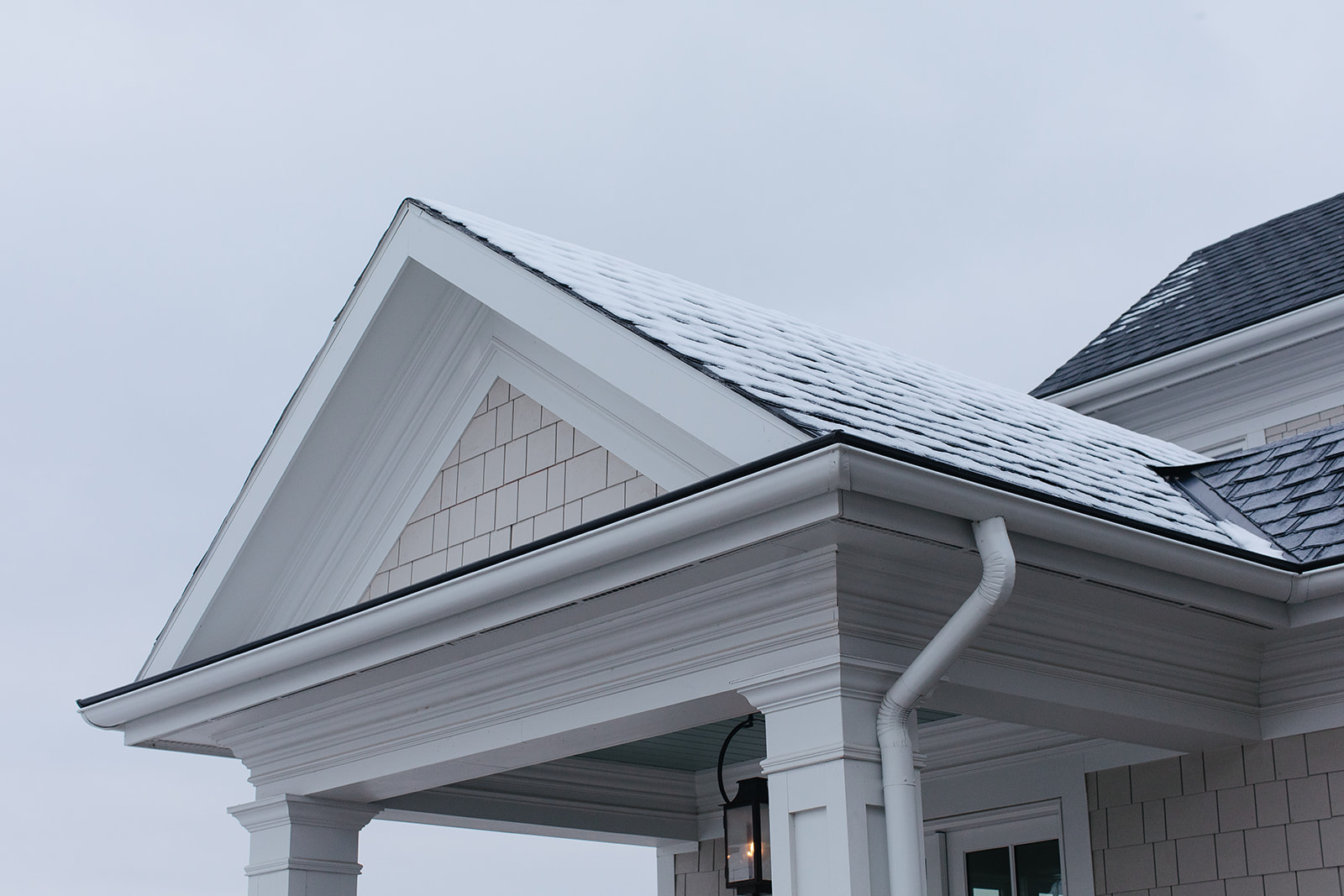
Discover How Advantage Gutter Guard® Perfectly Aligns with Your Winter Gutter Preparation Checklist:
- Our skilled gutter guard consultants will thoroughly assess your gutter system. They will determine if the gutter is the right size for your home and that there are enough downspouts to carry the rain volume from your roof.
- They’ll determine if the downspouts effectively divert water away from your foundation and propose any necessary adjustments for optimized water flow.
- Prior to Advantage Gutter Guard® installation, our technicians will evaluate the gutter slope to ensure it facilitates efficient drainage. They will properly seal any seams.
- During the installation of Advantage Gutter Guard®, we employ a robust, heavy-gauge aluminum bracket. This not only secures the gutter guard but also reinforces the connection between your gutters and your home. This helps your gutters be prepared to handle even the most substantial snowfalls.
- With Advantage Gutter Guard® in place, leaves, and debris are effectively kept out of your gutters, ensuring water can flow freely in the gutters unimpeded by clogs. It also blocks the gutter from snow and ice accumulation. Only the small amount of water circulating through the gutters on its way to the downspout might freeze when temps are below freezing.
Best gutter guard for heavy rain or snow
Crafted to withstand significant stress, Advantage Gutter Guard® is constructed from sturdy, heavy-gauge, all-metal materials – devoid of any plastic – and impervious to rust. Its resilience is tailored to withstand harsh winter weather, including powerful winds, torrential rain, and blizzards.
The durable, heavy-duty bracket is thoughtfully engineered to securely fasten the gutter guard and gutter, without attachment to the roof, ensuring a snug fit.
Subject to rigorous third-party testing, it demonstrates the ability to withstand 122 lbs. of pressure per linear foot, effectively safeguarding gutters from the burden of ice and snow.
To provide some perspective, this equates to supporting 4 feet of solid ice or 12 feet of snow stacked on top of it.
In essence, Advantage Gutter Guard® not only shields your home and gutter system but also offers enduring protection, unlike plastic or flimsy metal alternatives that deteriorate over time. Our premium materials guarantee a long-lasting solution.
Ice and ice buildup
Advantage Gutter Guard® provides both protection and support against the added weight of snow and ice. When gutters become laden with snow and ice, they face immense pressure. The constant freezing and thawing can lead to expansion, pushing nail supports out of the gutter and causing it to sag.
Advantage Gutter Guard® acts as a barrier, safeguarding the gutter system from this stress, supporting the snow and ice, and preventing them from entering the gutter. Thanks to our sturdy, heavy-gauge all-metal bracket and cover, adverse weather conditions in Kansas City are no match for us!
(Ice Dams: see below areas about how ice dams occur, how to prevent ice dams, and gutter relationship to ice damming)
Strong wind
Advantage Gutter Guard excels at handling high winds. Designed to strengthen gutters and help with high winds and extreme weather conditions, our all-metal cover and bracket are built to handle everything from scorching sun to powerful winds, heavy snow, and ice. (Tornadoes, extreme storms, and hurricanes might be the exception)
Our bracket system not only ensures a secure fit but also reinforces the integrity of the guttering system. (see below the difference between our bracket and others)
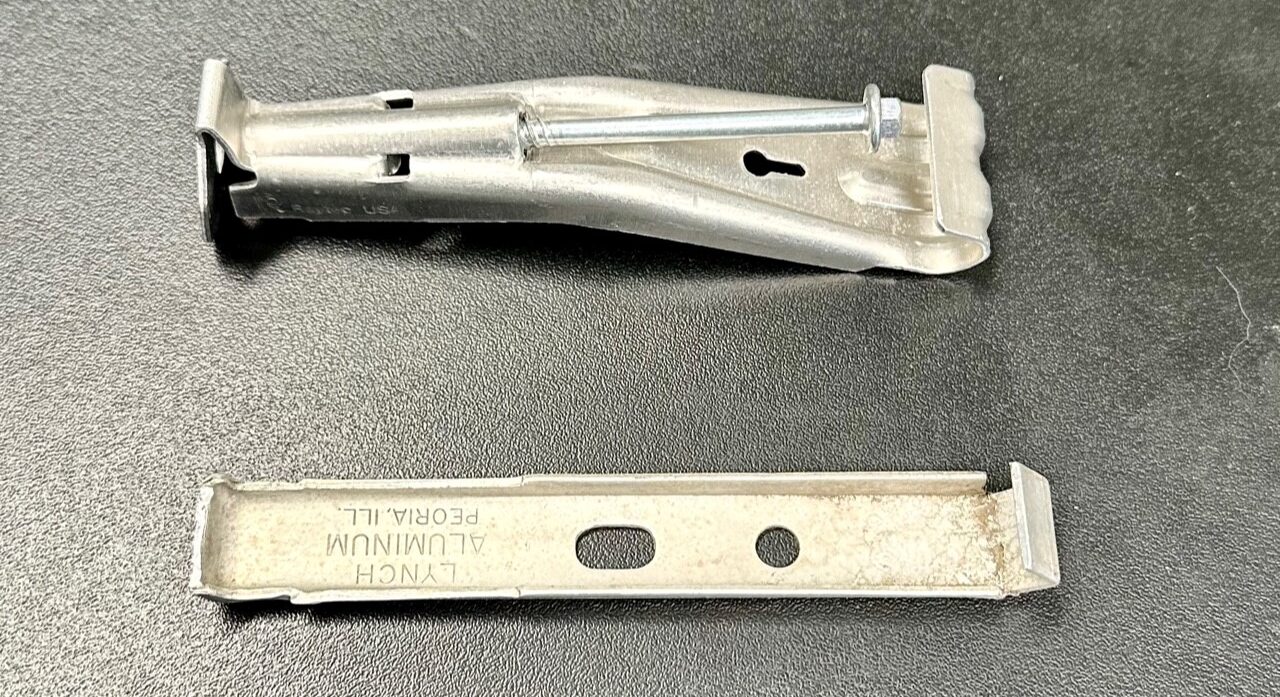
The strength of Advantage Gutter Guard® extends beyond weather resistance. It also keeps out troublesome critters like squirrels and birds. This added benefit is a direct result of the durability of our materials and the quality of our installation.
Contact GutterCover KC today for a cost estimate and professional installation.
If you would like to learn about other types of gutter guards and how they perform in the winter season keep reading.
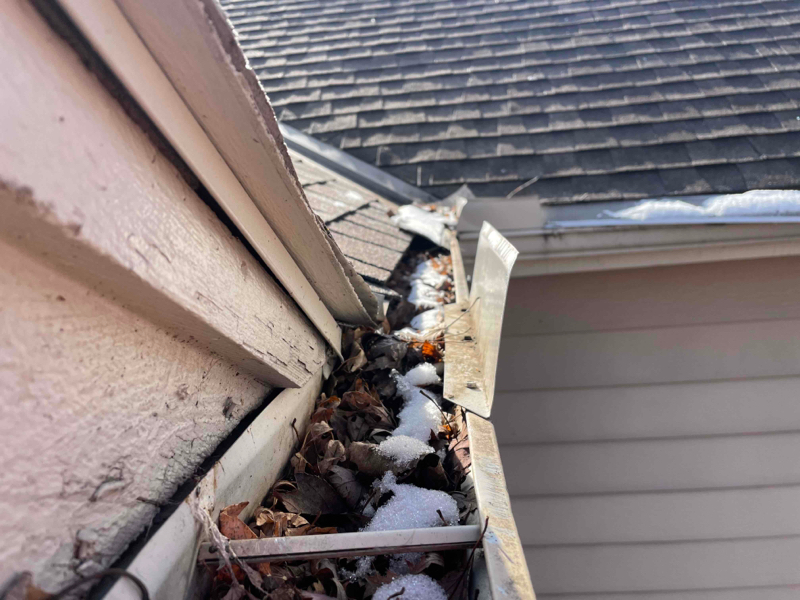
Other types of gutter guards in winter
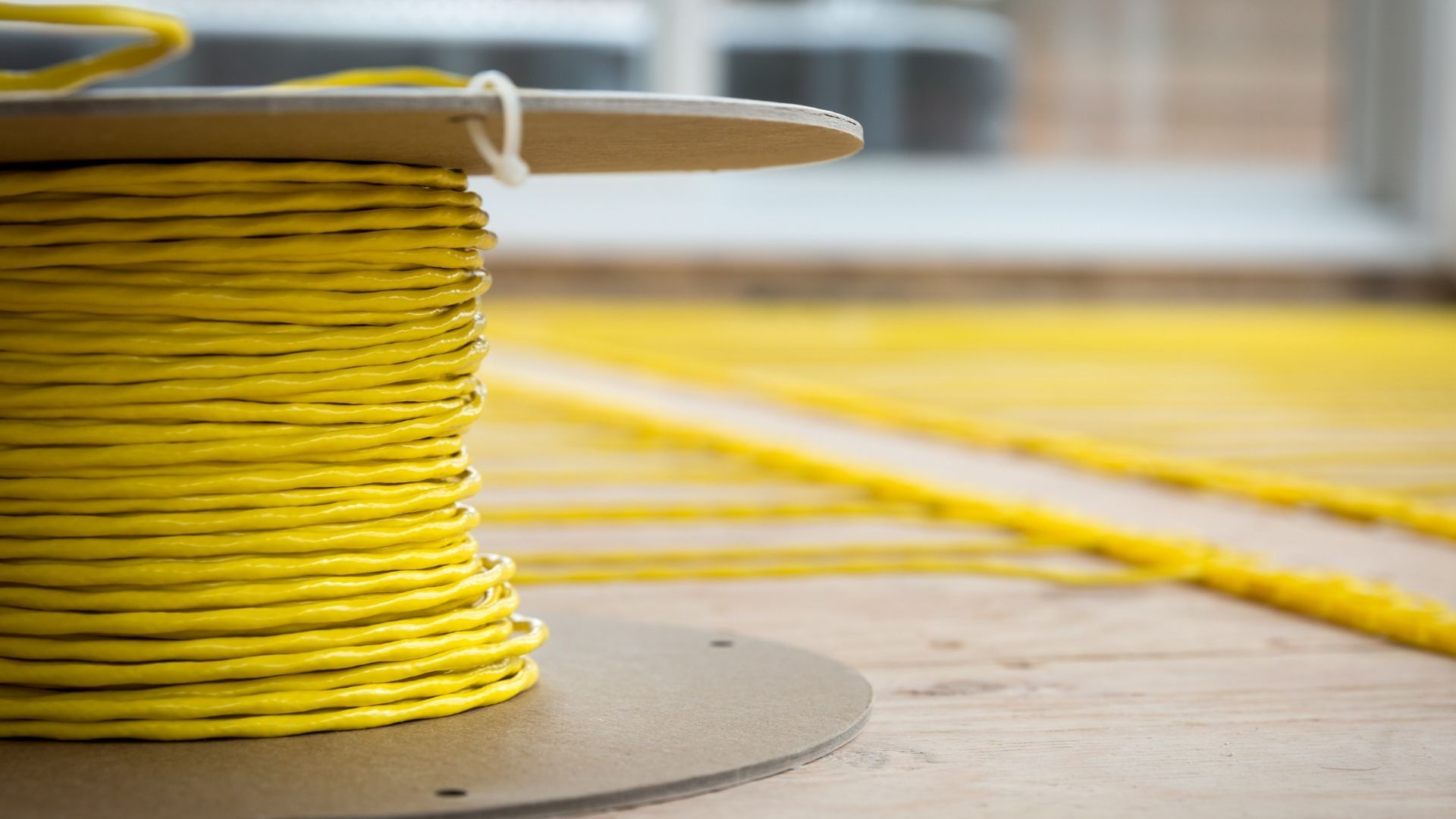
– Heated Gutter Guards
Heated gutter guards can raise safety concerns and increase energy consumption. These gutter guards are installed in the gutter system and used to keep the gutter warm so snow and ice melt. These systems are designed to prevent ice and snow buildup in gutters, which can be beneficial in preventing ice dams and water damage to your home.
Keep in mind that we live in the Midwest and have a couple of large snowstorms each year
The key question is if the heated gutter guards are worth the cost/safety concerns / ongoing cost to run. Here are some safety considerations and energy usage to keep in mind:
- Fire Hazard: Heated gutter guards typically use electric heating elements or cables to melt ice and snow. If not properly installed or maintained, they can pose a fire hazard. It’s crucial to have these systems installed by professionals and regularly inspect them to ensure safety.
- Energy Consumption: Heating elements in gutter guards require electricity to operate. This can lead to increased energy consumption, especially during the winter months. You may notice a higher electricity bill if you have heated gutter guards, so it’s important to weigh the energy cost against the benefits.
- Installation Quality: Proper installation is key to the safe and effective operation of heated gutter guards. If the system is not correctly installed, it may not function as intended, leading to potential safety issues or increased energy consumption without the desired ice and snow prevention benefits.
- Regular Maintenance: Heated gutter guards need regular maintenance to ensure they remain safe and energy-efficient. This includes checking for any damaged or frayed cables, keeping the system clean and free from debris, and ensuring that there are no electrical issues.
- Environmental Impact: Increased energy consumption from heated gutter guards can have an environmental impact, as it contributes to higher electricity usage. Considering eco-friendly alternatives or making your home more energy-efficient can help mitigate this impact.
- Safety Precautions: If you decide to install heated gutter guards, follow the safety guidelines provided by the manufacturer and consider using a thermostat or controller to regulate the heating element’s operation, reducing energy consumption when not needed.
In summary, while heated gutter guards can be effective in preventing ice and snow buildup in gutters, they come with safety considerations and increased energy consumption. Proper installation, regular maintenance, and safety precautions are essential to ensure that these systems operate safely and efficiently.
It’s important to weigh the benefits of ice dam prevention against the potential safety risks and energy costs before deciding to install heated gutter guards.
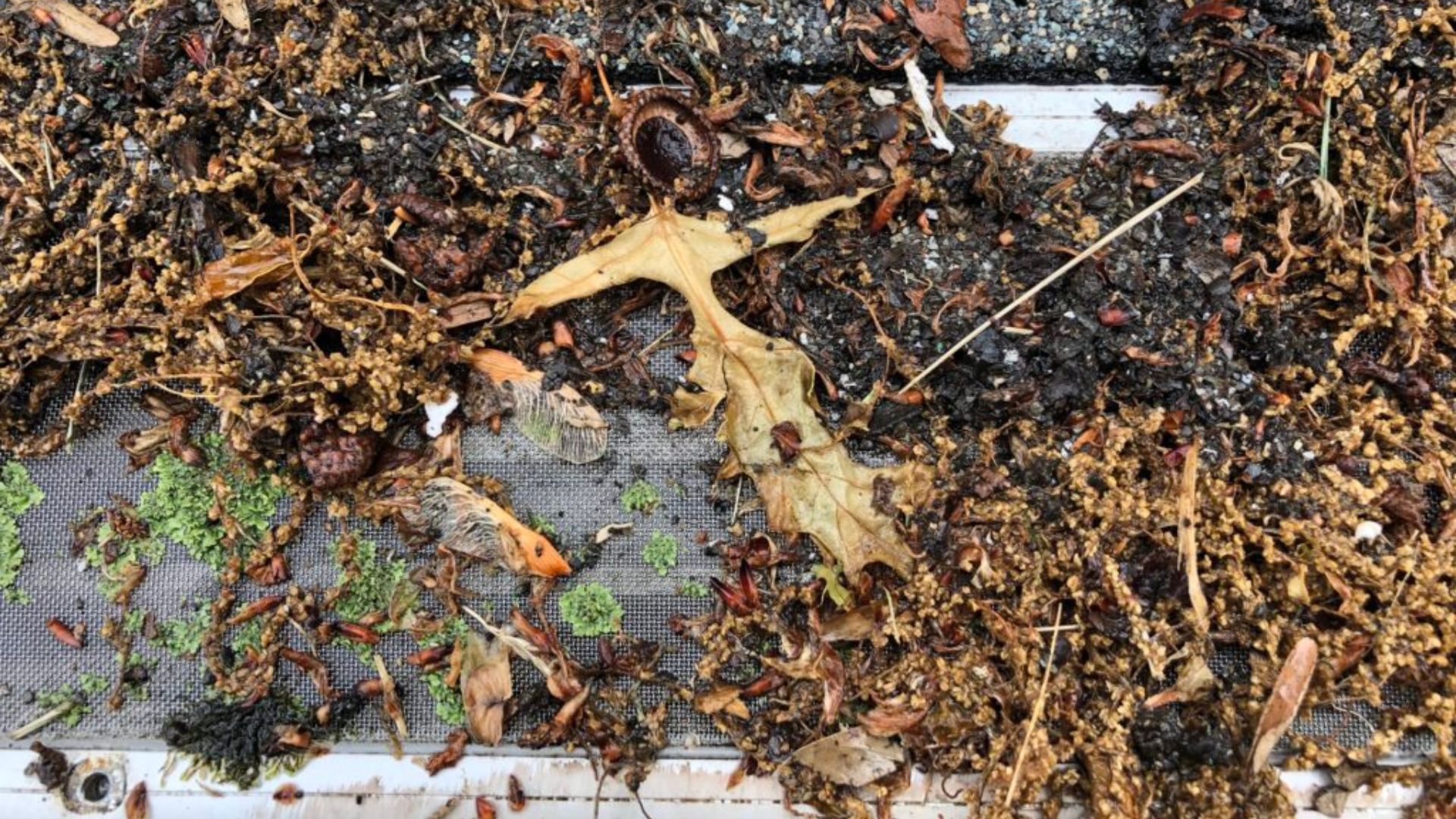
– Stainless Steel Micro Mesh
Stainless steel micro mesh gutter guards and screen gutter guards can encounter specific issues when it comes to snow accumulation:
- Clogging and Ice Formation: The fine mesh design of these guards, while effective at keeping out leaves and debris, can become clogged with snow and ice. This can block water from flowing into the gutter and cause icicles to form on the guard, potentially leading to ice dams.
- Weight Load: The weight of accumulated snow and ice on the mesh can strain the gutter system. If the gutter is not properly supported or if the guard is not strong enough to withstand the weight, it may lead to sagging or damage.
- Water Overflow: When the mesh is obstructed by snow and ice, it can prevent water from entering the gutter. This overflow can result in water damage to your home’s foundation, roof, and siding, which is the very issue gutter guards are designed to prevent.
- Maintenance: Cleaning snow and ice from the mesh gutter guards can be challenging, especially if it has frozen and adhered to the guard. This may require manual removal, which can be difficult in cold and icy conditions.
To address these issues, some homeowners with Stainless Steel Micro Mesh gutter guards opt to perform regular maintenance. Ensuring that the gutter system is properly supported can also help mitigate these snow-related problems.
Gutter guards to avoid for Midwest winters

Foam gutter guards, brush gutter guards, and DIY gutter guards can encounter specific issues when it comes to snow accumulation:
- Clogging and Ice Formation: Foam and brush gutter guards are prone to clogging with snow and ice. Snow can accumulate on the surface, and as it melts and refreezes, it can possibly form ice dams. This can block the passage of water into the gutter and potentially lead to water damage.
- Weight Load: The weight of accumulated snow and ice on foam and brush guards can be significant. This extra weight can strain the gutter system, potentially leading to sagging, detachment, or damage.
- Limited Water Flow: When foam and brush guards become clogged with snow and ice, water may not be able to flow through them properly. This can result in water overflow, leading to potential damage to your home’s foundation, roof, and siding.
- Maintenance: Cleaning snow and ice from foam and brush gutter guards can be challenging, especially if the snow has frozen onto the guard. This may require manual removal, which can be difficult in cold and icy conditions.
- Short Lifespan: The repeated freezing and thawing of snow and ice on foam and brush guards can lead to their deterioration over time. They may become less effective and require replacement sooner than other types of gutter guards.
To address these issues, some homeowners with foam and brush gutter guards choose to install heating elements or heated cables to melt snow and ice. Regular maintenance and keeping an eye on the condition of the guards and the heating cables during winter can help prevent problems.
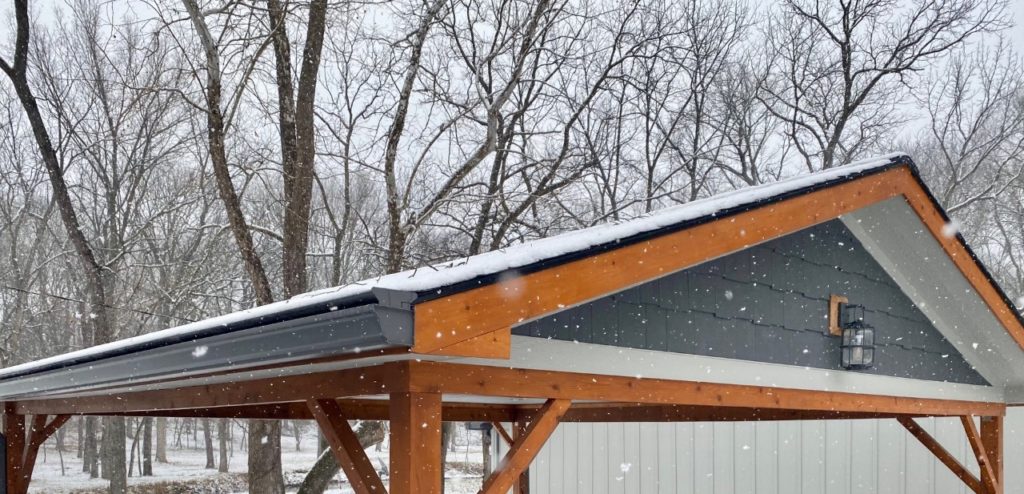
Advantage Gutter Guard® is your high-quality gutter protection over other gutter guards.
Offering several advantages that make it an excellent option for winter challenges:
- Strength and Durability: An aluminum gutter guard system; Advantage Gutter Guard® is built with a robust, heavy-gauge, all-metal construction and is reinforced with one of the strongest all-metal bracket designs in the industry. This durability allows it to withstand the weight of snow and ice, making it effective in supporting the gutter system all winter.
- Third-Party Testing: Advantage Gutter Guard has been third-party tested to handle 122 lbs. of pressure per linear foot. This ensures that it can withstand the harshness of winter, including heavy snow loads.
- Helps Prevent Ice Dams: By effectively keeping debris out of your gutters, Advantage Gutter Guard helps maintain proper water flow. This, in turn, can help prevent the formation of ice dams, which can be a significant issue in winter. Please keep reading for information on other causes of ice dams.
- No Roof Penetration: The bracket system used by Advantage Gutter Guard secures the guard in place without the need for roof penetration. This ensures the integrity of your roof is maintained, and you won’t have to worry about potential leaks or damage.
- Long-Term Solution: Advantage Gutter Guard’s high-quality materials and design provide a long-term solution. You won’t have to replace it regularly or worry about gutter cleaning, even in the face of harsh winter conditions.
- Reliable Snow and Ice Support: This gutter guard acts like a roof for your gutters, supporting the snow and ice load and preventing it from entering the gutter. It can withstand significant weight, ensuring the gutter system remains functional.
- Critter Protection: Advantage Gutter Guard is strong enough to keep out critters like squirrels and birds, adding an extra layer of protection during the winter months.
Overall, Advantage Gutter Guard’s strength, durability, and ability to handle winter challenges make it a top choice for homeowners looking to protect their gutters and homes from the harsh conditions of the colder months.
What Does the Advantage Gutter Guard® Warranty Cover?
The strength of a warranty is a reflection of the company supporting it. As Kansas City’s most established gutter protection company, we have upheld our warranty commitment since 2001. Advantage Gutter Guard® offers a fully transferable lifetime performance warranty, ensuring that your gutters will stay clog-free and free-flowing.
We also provide a no-clog guarantee, promising to remove debris at no cost if your gutters ever clog. Furthermore, our warranty includes a 20-year coverage for manufacturing defects.
GUTTER COVER KC 5-STAR REPUTATION
FAQ’s
Do gutter guards work in winter?
This depends on the type of gutter guards you have. Some gutter guards won’t work in the snow and ice at all, some will work but not as well. But the best designs work just as well year-round. The Advantage Gutter Guard® absolutely works in the winter! In fact, we pride ourselves on the strength of our Advantage Gutter Guard® during the winter season.
A third-party test found the Advantage Gutter Guard® to be able to handle 4 feet of ice without losing functionality! What this means for you is that the Advantage Gutter Guard® will be able to keep your gutters protected from debris while adding strength to your guttering system, keeping it tight against your fascia, rather than having the weight of ice and snow pull them away.
Advantage Gutter Guard® keeps ice, sleet, and snow from filling up the gutter and freezing it into a solid block of ice. This is important as the weather starts to turn warmer and the snow on the roof starts to melt. If the gutter is frozen solid the water has nowhere to go and flows over the gutter or worse creates a dam that can cause the water to back up under the shingles and infiltrate the home.
How do I keep my gutter guards from freezing?
If your gutter guards are outside in the snow, they’ll be freezing cold. There’s no way around that. What’s key is that they still function in the cold, snow, and ice. That’s going to depend on the design. The benefit of the Advantage Gutter Guard® is that it bears the weight of the snow and ice, and keeps the debris out while allowing either rain or melted snow into the gutters, where it can work its way safely out of your guttering system.
How do I clean my gutter guards during the winter months?
Advantage Gutter Guard can end the need for maintenance and stop ladder accidents from happening, especially in winter when there is snow and ice around.
Are icicles something to be concerned about?
The answer: it depends.
Are Icicles A Problem?
Icicles that form as a result of the sun’s warmth, are usually not a concern. They last a short time and are a natural process.
However, sometimes icicles form – not because of the sun’s heat, but because of escaping hot air from the living space below.
Here’s How That Happens:
- Warm air escapes the living space and warms the central portion of the roof.
- Snow and ice melt in the center of the roof, but stay frozen at the perimeter.
- Water from the melted snow and ice drains down the roof and meets with the still-frozen perimeter.
- The water re-freezes, forming what is called an ice dam. As a result, you might see icicles.
To determine the root cause of your icicles, ask yourself these questions:
- Does my home get icicles chronically?
- Are the icicles localized to a small area – like a dormer?
- Do icicles form on the side of my home that gets the most sun?
If you answered yes to questions #2, and #3 likely you have little to worry about.
However, if you have chronic icicles that seem to appear on large sections of the home – regardless of whether the sun is out or not, then we have some solutions for you.
3 Ways to Prevent Icicles Caused By Ice Dams
1) Identify & Seal Air Leaks
Ice dams are created by warm air escaping from your living space to the attic. Your first step to preventing ice dams is identifying air leaks. Likely, you will want to hire an energy professional to evaluate and address these issues. When you hire an energy professional contractor they should:
- Conduct a blower door test: this will evaluate how airtight your ceiling is.
- Use an infrared camera to find places in the ceiling where there is excessive heat loss.
- Once the leaks are identified, you can move forward with sealing the areas that are leaking. Most often the leak comes via: exhaust systems, chimneys, or other ducts.
2) Natural Roof Ventilation
Ventilation allows for heat transfer and uniform roof temperatures.
To do this: Ensure your home has proper venting running along the length of the home.
There are two types of vents you will need:
- Soffit vents: The soffit is the underside part of the roof’s eaves.
- Ridge vent: These vents are installed along the ridge of the roof.
Both types of vents work together to create a vacuum that pulls cold air up through the soffit and through the roof ridge vents.
The result: removal of the stagnant heat that builds up at the roof’s ridge and is the culprit behind ice dams.
Be sure to check your soffit vents. Homes are typically built with them, but sometimes the vents can be blocked – either by insulation or by paint.
A note of caution: Do not add mechanical attic ventilation which can cause damaging moisture problems and negative pressure in the home.
3) Increase the Ceiling or Roof Insulation
This will help prevent warm air escape from your living space to the attic. As you do so, be careful when adding blown-in insulation not to cover the soffit vents with insulation. The soffit vents are needed to create a free flow of air.
Ice Dams Can Cause More Problems than Icicles
When it comes to ice dams, icicles are typically the least of your worries. Ice dams can also cause water to leak inside your home damaging walls, ceilings, and insulation and encouraging mold growth.
So if you’re noticing icicles now, take preventive measures so next winter you can enjoy an icicle-free, ice-dam-free winter!
Do Icicles Have Anything to Do with Gutters?
Not really. Although, it is always important to have clean, free-flowing gutters. So the melting ice and snow have a clear path to the ground. If gutters are clogged, the blocked, stagnant water will freeze and weigh down the gutters. The frozen gutter water will be the last to melt. This could cause water to overflow the gutters. If this happens often, it can result in foundation issues, flooded basements, etc.





